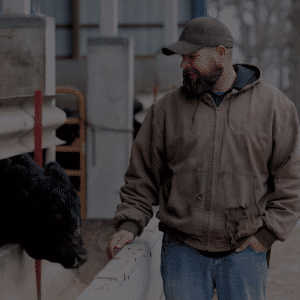
Beef | Poultry | Posts | Swine | Dairy
By:
Mary Auth
May 22nd, 2019
The 2017 ag census was recently released, and it shows that the highest percentage of total farm expenditures – 15.3 % – is spent on animal feed and that livestock, poultry and related expense take another 11.7 %. Remarkably, tractors and self-propelled farm machinery only account for 3.5 %.

By:
Kathleen Lonergan Erickson
May 15th, 2019
Implementing new technologies in the beef cow herd may help improve reproductive efficiency. Still, according to a new study from the USDA, not many producers are taking advantage of the many tech tools that are proven key performance indicators for herd profitability.

Receive insight and updates into protein production building solutions straight to your inbox.

By:
Kathleen Lonergan Erickson
May 8th, 2019
The advantages of hybrid vigor have long been acknowledged in the beef world. Compared to purebred or line-bred systems, the advantages include improvements in areas such as weaning weight, and cow longevity and fertility to name a few.

By:
Kathleen Lonergan Erickson
April 24th, 2019
New research from the Northern New York Agricultural Development Program shows some surprising results. By reducing 27 seconds of milking time, the farms in the research test were able to gain of 15.8 minutes per milking shift. An additional 15 minutes is significant in the parlor as it allows producers to complete another turn of cows at each shift with no additional labor required, no other labor costs, and no detrimental effects on milk production.

By:
Mary Auth
April 17th, 2019
There’s a lot that goes on under one roof – especially when that roof is housing livestock. Beyond the livestock, today’s livestock facilities are home to state-of-the-art precision ag technologies and tools help the animals stay secure, healthy, comfortable, and productive. Technologies in use in animal production monitor conditions such as their eating and drinking behaviors, their weight, their temperature, and their movement around the facilities. Each is designed to support animals in a healthy growing environment. These factors combine to improve animal care and health. Also, they help producers monitor, assess, and address animal well-being in a timely manner.

By:
Mary Auth
April 11th, 2019
It’s been said before, and it is still worth mentioning it again: a bio-secure building is worth more than the weight inside. With the growing concern to keep African Swine Fever (ASF) from entering the United States, it is even more critical now to make sure your hog facilities are protecting your livestock investment.

By:
Kathleen Lonergan Erickson
March 27th, 2019
Considering cage-free egg production? Here are five tips to help producers address costs and new challenges of switching to a cage-free production environment.

By:
Kathleen Lonergan Erickson
March 20th, 2019
Many U.S. food companies have pledged to move to sourcing eggs raised in cage-free houses by 2025. Consumer demand has influenced many companies including the likes of Wal-Mart, McDonalds, Burger King, Starbucks, Subway, etc., to make the commitment.